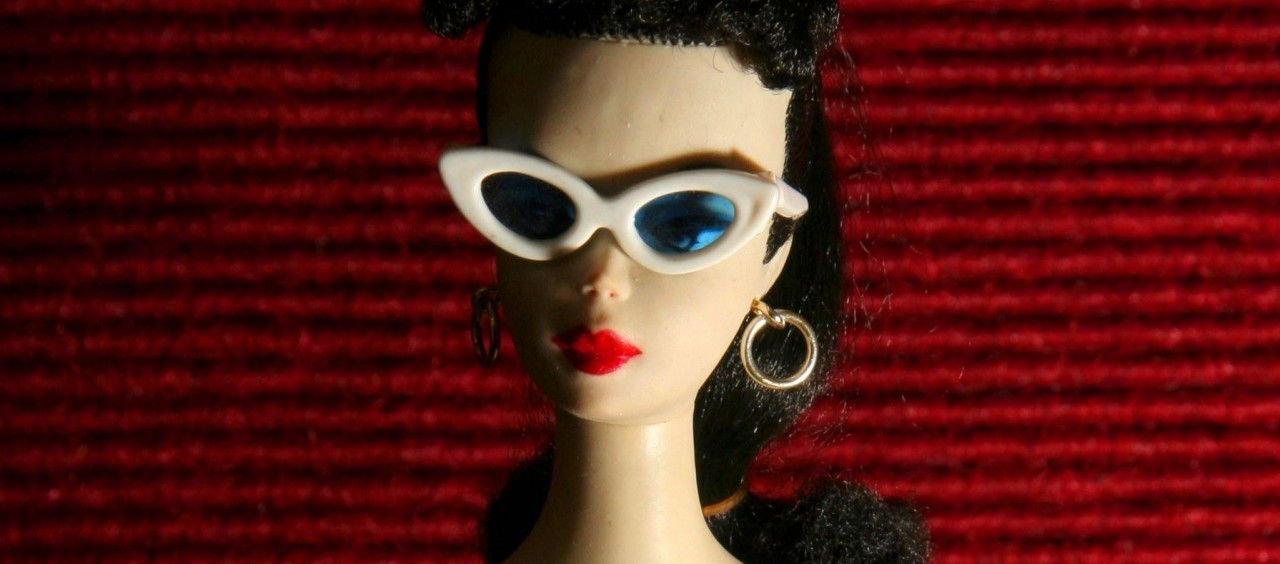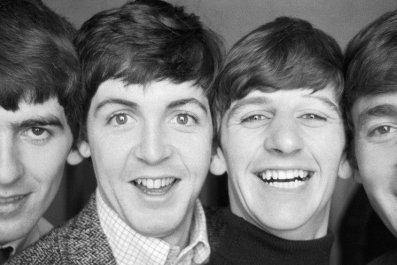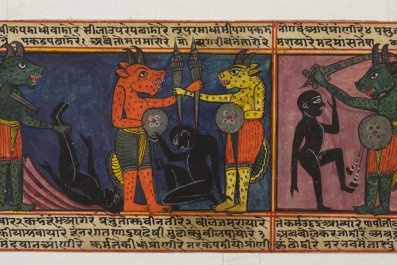Remember your favorite toy from childhood - the gift you asked Santa for that appeared magically and is still a treasured memory? Or the coveted present you never got, and the emptiness that lingers? Those emotional tugs from long ago tell you that toys are more than fun, they are a profound part of our lives as children, and as adults.
During this holiday season, when too many people are putting too little thought and often too much money into presents for their children, here are some ruminations on the importance of playthings:
No. 1
Toys can exert a powerful influence, shaping lifestyles and career choices as well as culture, though often in ways not at all obvious. Frank Lloyd Wright credited his architectural achievements to children's wooden buildings blocks created by German inventor Friedrich Fröbel, who also gave us kindergarten. Wright's son John developed Lincoln Logs, made of wood from 1918 until the 1970s, when they became partly plastic.
No. 2
Play is when "the child and the poet are at home with the savage," Johan Huizinga, a Dutch historian who pioneered modern cultural studies, wrote in 1955.
No. 3
Some playthings seem universal, such as balls, dolls, and pull toys, which date back at least 11,000 years.
No. 4
In the 1600s, John Locke, the British philosopher whose ideas on liberty influenced the U.S. Constitution, made wooden alphabet blocks for children, believing it would help them learn to read. Since then the toy business has grown steadily more sophisticated at knowing how to talk to children, and how to get them to nag their parents into making purchases.
No. 5
Toys drive a massive manufacturing industry, dominated by Germany a century and more ago and today by China. Indeed the whole modern practice, in which American firms design and market products but outsource manufacturing to China and other Asian countries, was pioneered by toy industry entrepreneurs after World War II.
No. 6
Locke warned against buying many toys, saying it teaches the child to "never be satisfied with what he hath."
The idea of a cornucopia of holiday presents is a modern invention, one that began with the rise of department stores in the 1820s. Despite the best efforts of marketers, toys generally were given sparingly, even to children in prosperous homes, until after World War II.
Rachel and Maria Williams, daughters of the richest family in Utica, N.Y., in the 1850s, received notebooks in which they recorded their two or three annual Christmas presents. One year they received an elaborate two-story dollhouse and later a toy coal bucket, said Christopher Bensch, a toy curator at the Strong National Museum of Play in Rochester, N.Y. Most years, though, the rich girls "would get a book, a ball, an orange, and that was it."
No. 7
That once exotic fruit, an orange, was the only present given on an 1890s Christmas to each of the nine children of impoverished Norwegian immigrants near Detroit Lakes, Minn. Eight children gobbled theirs instantly, but the youngest, Cora Morken, nestled hers in an apron pocket, caressing it and exploring its texture all day while imagining what it must taste like until, in late afternoon, she sat on a snowy bench, watching the sun set as she slowly peeled back the rind, savoring each slice.
My grandmother told me this story from her childhood every Christmas in the 1950s on her orange ranch in the California town named for the fruit, and she made me promise that when I grew up I would pass it on to my children.
It is the present I treasure most.
No. 8
Toys both shape and reflect their times. Just as Locke's blocks and literacy fit together, the prominence of Lincoln Logs, Tinker Toys, and metal Erector Sets accompanied a century-long boom in building bridges, skyscrapers, and great bridges.
No. 9
War toys were big sellers from the end of World War II through the Vietnam War and remain popular, but they are rarely big sellers. The show When Barbie Dated G.I. Joe: America's Romance with Cold War Toys, at the Strong Museum in 1997, displayed a vast array of military toys including bathtub submarines that, powered by baking soda, sank beneath the surface and rose again.
No. 10
While toy weaponry was marketed to boys, toy companies steered girls to the Easy Bake Oven and Little Lady Electric Stove. And 1950s dolls were nearly all white - and innocent.
That began to change in 1959 when Ruth Handler introduced Barbie, modeled after a plastic doll named Lilli that, wearing miniature lingerie, was sold to German men. Barbie did not get her first black companion, Francine, until 1967.
Barbie aroused concerns from prudes and feminists alike, spawning a vast literature about the dangers of sexualizing toys, while at the same time stirring new ideas about equality and opportunity still playing out in America.
No. 11
In the 1970s I banned Barbies from my home. Only at a Christmas dinner decades later did smirks from my grown children lead to the discovery that my two oldest daughters just hid their Barbies when I came home, resolving the mystery of why their bedroom always seemed so picked up.
No. 12
Professor Stephen Kline of Simon Fraser University in Vancouver, British Columbia says free playtime is crucial. "Play is very complex and profound in its effects on psychological and social formation," he said, adding that "play is really central to the cultural life of late consumer capitalism" of today.
While Locke worried that children would spend too much time playing, Gottlieb and many others now worry that "children have eight hours less free time per week than they did two decades ago because of overscheduling and homework" and thus may not get enough time to play and let their imaginations run free.
No. 13
Today, video games set off new fears that children slaying digital zombies will grow to become violent, just as 1950s parents worried about boys dressed in war surplus fighting off imaginary Nazis in their backyards.
Richard Gottlieb, a founder of the Global Toy Experts consulting firm, sees no difference between these fears and how "the rise of the novel in the 19th century had parents very concerned that their children were staying in their rooms all the time, were not being social."
No. 14
Among Americans who buy Christmas gifts, the average amount they spent this year is $773, which is $61 less than in 2012, according to the Gallup survey. Givers spending $1,000 or more declined from 30 percent last year to 26 percent this year.
No. 15
In today's dollars, the average spending on Christmas gifts this year will be 38 percent below the $1,249 average in 1999. This year will be the least generous Christmas of each year since 1999, except for the Great Recession years of 2008 ($828) and 2009 ($858), suggesting Santa thinks that when it comes to economic policies, Americans have been naughty this millennium.
























